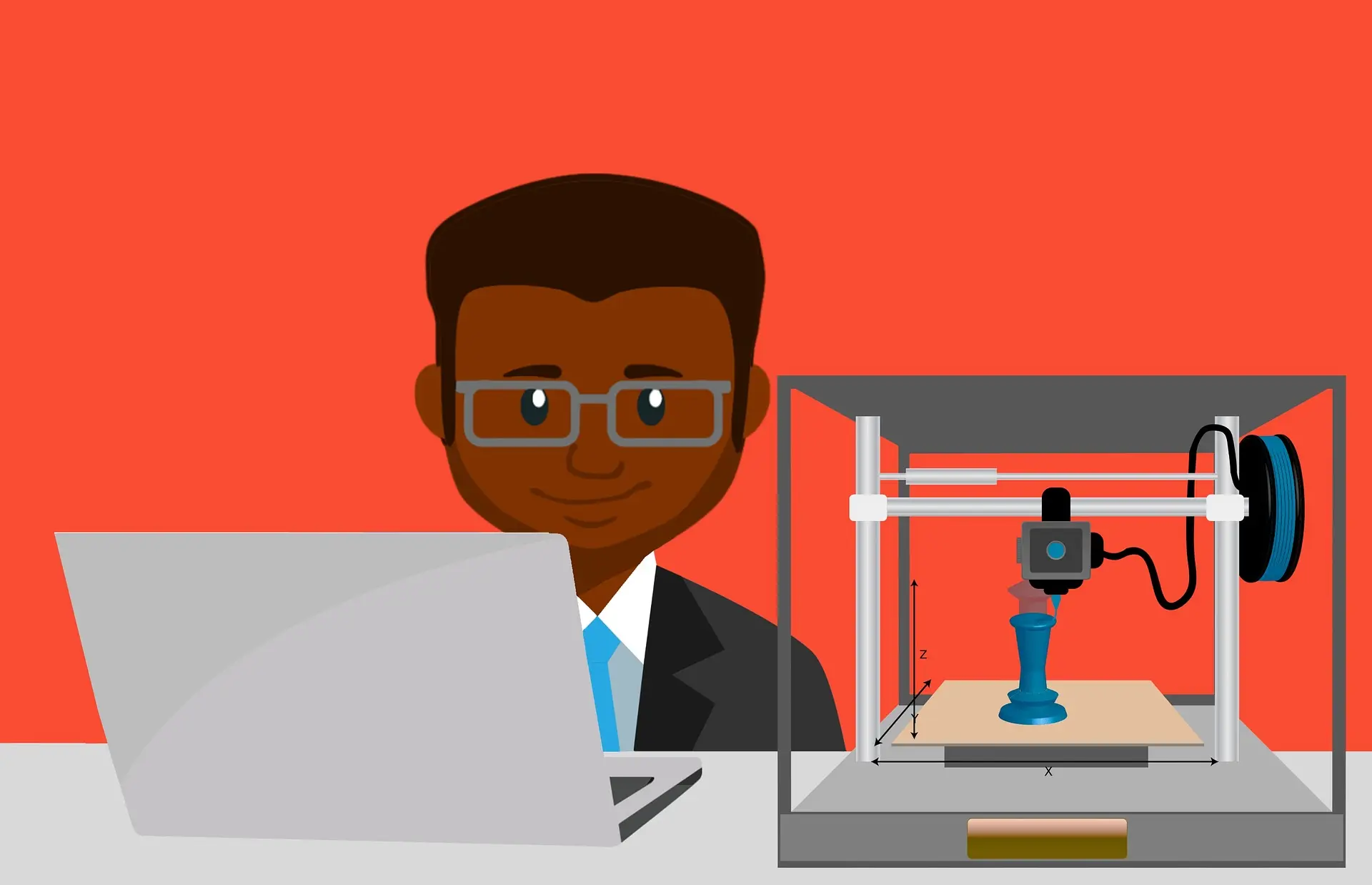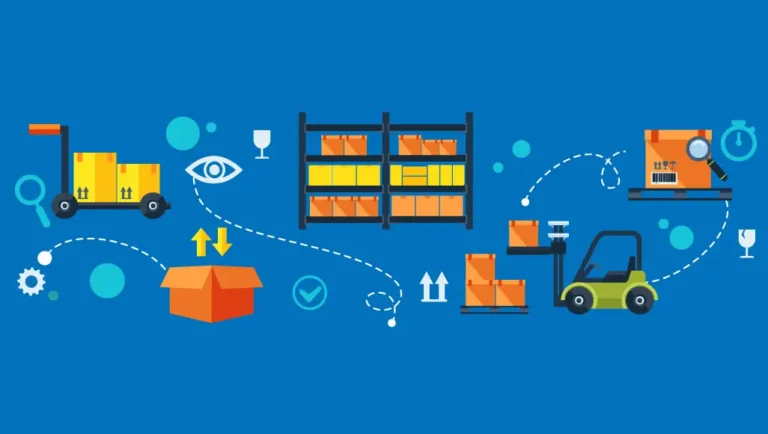3D Printing for Beginners: The Easy Way Now
Introduction
“3D Printing for Beginners: The Easy Way Now” welcomes you! Do you want to learn about 3D printing but are intimidated by the technical language and complicated processes? Don’t be concerned; you’re not alone. That’s why we wrote this guide: to help novices like you understand and get started with 3D printing.
We’ll go through everything you need to know to get started, from picking the correct 3D printer to setting it up and printing your first model, in this blog. We’ll also provide some pointers and tactics to help you succeed with 3D printing. So, whether you’re brand new to the game or have some experience but want to learn more, this tutorial is for you. Let’s get this party started!
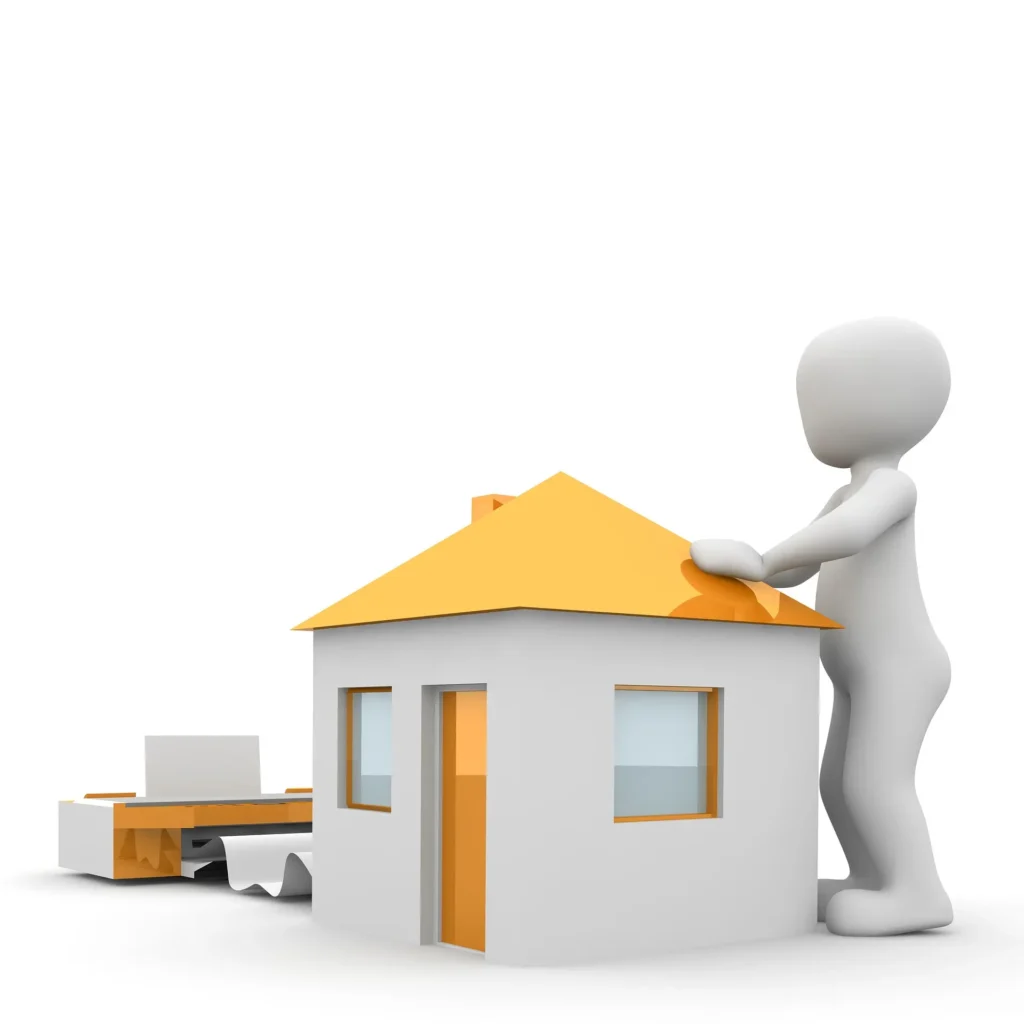
Definition and a brief history of 3D printing
3D printing, also known as additive manufacturing, is the process of turning a computer model into a real thing by adding layer upon layer of material. It is a type of fast prototyping that enables users to create complicated forms and patterns that would be difficult or impossible to build using regular manufacturing processes.
The origins of 3D printing may be traced back to the 1980s when Chuck Hull pioneered a technique known as stereolithography (SLA). A laser was used to cure layers of photopolymer resin, resulting in a solid item from a liquid. Other 3D printing methods, such as fused deposition modeling (FDM) and selective laser sintering, were developed in the 1990s (SLS). To manufacture 3D things, these technologies utilized various materials such as plastic filaments and powdered metals.
Because of technological improvements and the availability of home 3D printers, 3D printing has become more accessible and cheap in recent years. It’s also been used for anything from prototype and product development to manufacturing and bespoke production. 3D printing has enormous promise, yet it is still a quickly expanding subject with many interesting discoveries in the future.
Benefits of 3D printing for beginners
There are several advantages to adopting 3D printing for beginners, regardless of whether you are a hobbyist, designer, engineer, or business. Among the many advantages are:
- Cost savings: When compared to traditional manufacturing processes, 3D printing allows you to generate prototypes and small-batch productions at a cheaper cost. It also removes the need for costly tooling and molds.
- Customization: You may simply customize and customize your designs with 3D printing to match unique demands or preferences. You may also quickly and simply edit and tweak your designs.
- Speed: Rather than weeks or months, 3D printing allows you to get from concept to finished product in a matter of hours or days. This helps you to move more swiftly and get your ideas to market.
- Complexity: 3D printing enables the creation of complicated forms and geometries that would be difficult or impossible to create using traditional production processes. This creates new opportunities for design and innovation.
- Sustainability: Because 3D printing allows you to generate only what you need, it decreases waste and resource consumption while also reducing the need for physical products and transportation.
Overall, 3D printing provides several benefits for novices seeking to develop their creativity, save time and money, and bring their ideas to reality.
Choosing a 3D printer
There are several aspects to consider when selecting a 3D printer. Here are some crucial topics to think about before making your decision:
1. Types of 3D printers (e.g. FDM, SLA, SLS)
There are various sorts of 3D printers available, each with its own set of advantages and disadvantages. The most prevalent kinds are as follows:
- Fused Deposition Modeling (FDM): FDM printers produce an item by extruding molten plastic filament layer by layer through a heated nozzle. These printers are commonly accessible and inexpensive, however, they have a reduced resolution and can only print on particular materials.
- Stereolithography (SLA): To make an item, SLA printers utilize a laser to cure layers of photopolymer resin. These printers have a greater resolution and can print on a larger variety of materials, but they are often more costly and require more upkeep.
- Selective Laser Sintering (SLS): SLS printers employ a laser to fuse powdered materials (such as metals and polymers) layer by layer to make the item. These printers have a high resolution and can print on a variety of materials, but they are costly and need specific skills to use.
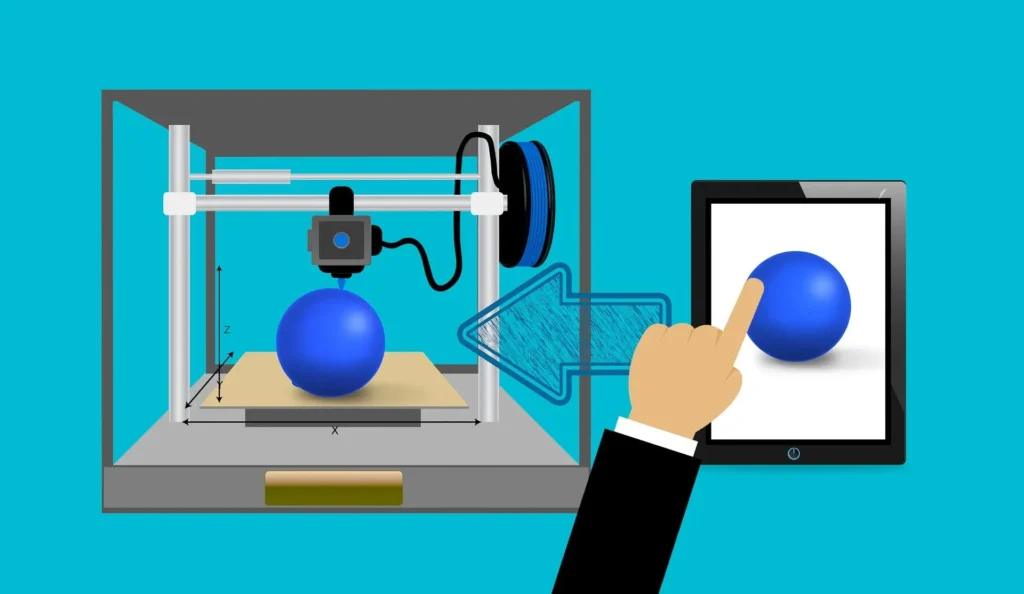
2. Key factors to consider when choosing a 3D printer
- Budget: Prices for 3D printers range from a few hundred dollars to tens of thousands of dollars. Determine your budget and then hunt for a printer that meets both your demands and your budget.
- Size and resolution: Consider the size of the things you wish to print as well as the resolution (quality) of the prints. Larger, higher-resolution printers may be more expensive, but they may be essential for your needs.
- Materials: Different 3D printers can use different materials. Consider the materials you intend to use and ensure that the printer you select is compatible.
- Ease of use: If you are a newbie, search for a printer that is simple to set up and operate. Some printers come completely constructed and with user-friendly software, but others may necessitate more technical understanding.
By taking these aspects into account, you may discover the best 3D printer for your needs and budget.
Setting up your 3D printer
1. Unboxing and assembly of your 3D printer
After you’ve decided on a 3D printer, the following step is to have it set up and ready to use. Here are some instructions for unpacking and building your 3D printer:
- Remove all of the printer’s components with caution. Check that you have all of the required components and accessories.
- Assemble the printer according to the manufacturer’s instructions. Attaching the frame, motors, and other components may be included.
- Connect the printer to an electrical outlet and turn it on. Some printers may require extra setup processes, such as firmware installation or build platform calibration.
- Check to see if the printer is working correctly. This might include performing a test print or rotating the printer’s axis to confirm everything is in working order.
- Learn how to use the printer’s controls and capabilities. Understanding the user interface, adjusting settings, and loading and unloading filament are all examples of this.
You may set up your 3D printer and have it ready to use by following these instructions. To guarantee a smooth and successful setup procedure, take your time and carefully follow the instructions.
2. Installing and configuring necessary software (e.g. slicing software, 3D modeling software)
You must install and set up the software in order to operate your 3D printer. Here are some examples of software that you might need to use:
- Slicing software is used to transform a 3D model into a sequence of layers that the printer will use to create the product. The model is used by the software to generate G-code, which is a collection of instructions that tells the printer how to move and extrude material to construct the item. Cura, Simplify3D, and Slic3r are some of the slicing software alternatives available.
- 3D modeling software: This program is used to generate and modify 3D models. There are several possibilities for 3D modeling software, ranging from free and simple solutions like Tinkercad to professional-grade tools like AutoCAD or SolidWorks.
- Printer control software: Some 3D printers have control software that allows you to connect to the printer and remotely operate it. You may also be able to use this program to monitor the progress of a print, pause or cancel a print, and change settings.
- You will need to follow the manufacturer’s instructions and maybe download the software from the internet to install and configure this sort of software. Check your system requirements and follow any instructions to successfully install and set up the program. After installing the appropriate software, you will be ready to begin 3D printing!
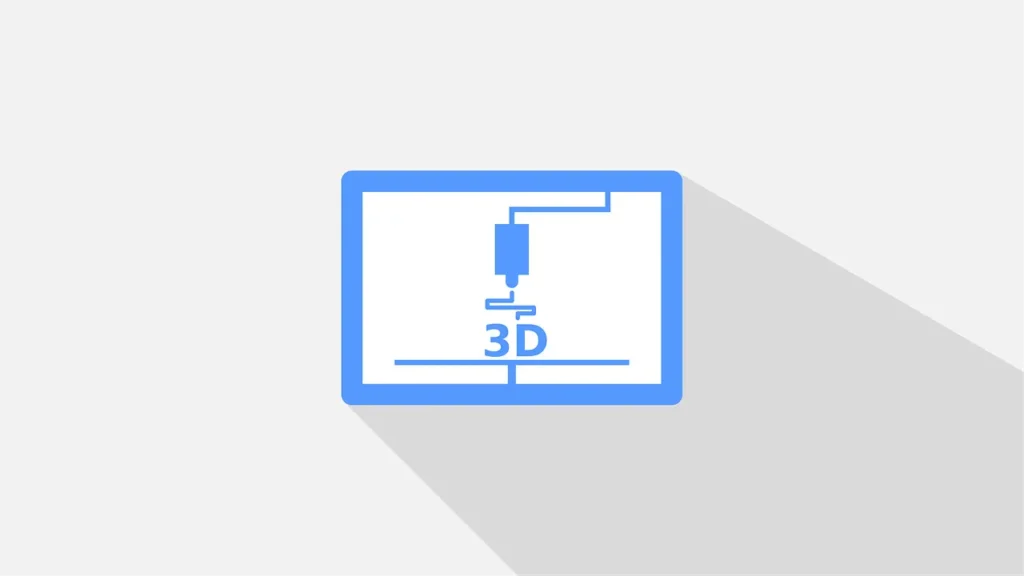
Printing your first object
Printing your first 3D item may be exhilarating, but it can also be scary if you don’t know where to begin. Here are some guidelines to help you get started:
1. Designing or finding a 3D model
If you have your own design, make the model with 3D modeling software. If you don’t have a design, you might look for free or paid 3D models online. Check that the model is in a compatible file format (e.g.,.STL,.OBJ) and that it is appropriate for your printer’s capabilities.
2. Slicing the model and generating the G-code
Slicing software is used to turn the 3D model into the series of layers that the printer will use to construct the product. Select the required options (for example, infill and layer height) and produce the G-code.
3. Preparing the build platform and loading the filament
Check that the construction platform is level and tidy. Some printers may require the use of glue or other materials to aid in the attachment of the item to the platform.
4. Printing the object and troubleshooting common issues
Most 3D printers employ filament (e.g., plastic, metal) to construct the item. Load the filament into the printer according to the manufacturer’s instructions.
5. Start the print
Load the G-code into the printer’s control software and press the print button. Keep an eye on the print’s development and be prepared to handle any difficulties that may emerge (e.g. filament jam, overheating).
You may successfully print your first 3D item by following these instructions. It may take some practice and patience to get the hang of it, but with practice and patience, you’ll be a 3D printing pro in no time!
Tips and tricks for successful 3D printing
To achieve the greatest results from your 3D printer, you need to follow these 3D printing tips and techniques. Here are some pointers to help you get better prints:
Tips 1: Choose the right filament
Select the relevant filament: Varied filaments have different qualities and are appropriate for different sorts of projects. Choose the appropriate filament for your project and adhere to the suggested temperature and flow settings.
Tip 2: Level the build platform
Level the construction platform: It is critical to ensure that the build platform is level in order to get optimum outcomes. Before beginning a print, use a level or follow the manufacturer’s directions to level the platform.
Tip 3: Use supports
If your model includes overhanging or unsupported elements, you may need to utilize supports to prevent drooping or collapse while printing. Create the supports with slicing software and carefully remove them when the print is complete.
Tip 4: Experiment with settings
Experiment with different parameters: Different settings (for example, infill and layer height) might impact the quality and look of your prints. Experiment with several settings to see which ones work best for your printer and project.
Tip 5: Clean and maintain your printer:
Clean and maintain your printer: Cleaning and maintaining your printer on a regular basis will assist enhance print quality and extending the life of your printer. For cleaning and maintenance, follow the manufacturer’s recommendations.
You may enhance the success rate and quality of your 3D printing by using these tips and tactics. You’ll be able to get professional-grade outcomes from your 3D printer with practice and experimentation.
FAQ
What are the Future potential and possibilities for 3D printing?
Since its start in the 1980s, 3D printing has gone a long way, and the future potential and possibilities for this technology are incredibly fascinating. Here are a few examples of how 3D printing might influence the future:
1. 3D printing enables simple customization and personalization of goods ranging from jewelry and home décor to prostheses and medical devices. This might result in a trend toward mass customization and less overproduction and waste.
2. Manufacturing and production: By enabling on-demand, decentralized production, 3D printing has the potential to transform traditional manufacturing and production processes. This might result in shorter lead times, lower inventory and transportation costs, as well as increased efficiency and agility.
3. Healthcare & medicine: 3D printing has previously been used to construct a variety of medical items and technologies, including prostheses, implants, and surgical tools. It may be utilized in the future to print tailored drugs as well as tissues and organs for transplantation.
4. 3D printing helps students and researchers to readily develop and test ideas, resulting in faster and more efficient innovation. It also enables the design of interactive learning experiences and presentations that are hands-on.
Overall, the potential and prospects for 3D printing in the future are broad and diverse. It’s an amazing moment to be a part of this expanding area, and we’re excited to see what the future holds for 3D printing.
How can I progress further in 3D Printing?
Congratulations on taking the first steps toward learning about 3D printing! We hope this blog post has provided you with the information and confidence you need to get started with 3D printing. As you continue to learn and experiment with this technology, you’ll find that there is always more to learn and discover.
Here are a few more methods to keep learning and exploring with 3D printing:
1. Participate in online communities and forums: There are several online communities and forums where you may interact with other 3D printing aficionados and exchange knowledge, tips, and ideas. As you continue to learn and improve, these groups may be a fantastic source of support and inspiration.
2. Investigate various materials and processes: 3D printing allows you to work with a diverse selection of materials and techniques, including plastic, metal, wood, and concrete. Experiment with various materials and approaches to see what works best for your specific requirements and interests.
3. Learn new software and skills: Many tools and skills, such as 3D modeling, CAD, and machine learning, may help you enhance your 3D printing talents. Consider taking online classes or visiting seminars to gain these abilities and advance your 3D printing.
4. Share your works and solicit comments: Show off your 3D printing to others and solicit feedback. This might assist you in learning from others and improving your talents. You may also enter 3D printing competitions or attend maker fairs to show off your work and receive feedback from professionals and peers.
Continue to learn and experiment with 3D printing to attain even more success and creativity with this technology. So don’t be frightened to continue studying.
What are the limitations and challenges of 3D printing?
Although 3D printing is a strong and flexible technology, it does have limitations and obstacles. Some of the most significant constraints and problems of 3D printing are as follows:
Material limitations: The materials that 3D printers may employ are limited, and not all materials are appropriate for 3D printing. Some materials may necessitate the use of specialist printers or procedures, while others may be incapable of being printed at all.
Resolution and accuracy: Because 3D printers have limited resolution, they cannot generate prints with infinite detail. Furthermore, factors such as printer calibration, print orientation, and material qualities may all impact the accuracy of 3D printers.
Build size: Because most 3D printers have a restricted build size, they cannot print items greater than a particular size.
Time and cost: 3D printing takes time, especially for larger or more intricate prints. Furthermore, the cost of 3D printing may be prohibitive for some consumers, particularly if specialist materials or equipment are required.
Worries concerning safety and the environment: Some 3D printing materials may be dangerous or emit harmful pollutants, and there are also concerns about the disposal of 3D printing trash.
Intellectual property issues: There are additional difficulties in the usage and distribution of 3D models and designs, and it is critical to respect intellectual property rights while utilizing 3D printing.
Overall, while 3D printing has numerous advantages and possible uses, it is critical to be aware of its limitations and problems in order to get the best results and properly use the technology.
Conclusion
To summarize, 3D printing is a strong and adaptable technique that enables novices to bring their ideas to life in a quick, cost-effective, and customized manner. By following the procedures explained in this blog article (3d Printing for Beginners), you may confidently select the correct 3D printer, set it up, and print your first object. You’ll be able to master the skill of 3D printing and build a broad range of things and designs with some practice and experimenting.
3D printing is an interesting and quickly expanding area with plenty to learn and explore. Experiment with various materials, settings, and procedures to determine what works best for your requirements. You’ll discover that 3D printing is a fun and gratifying hobby or job that allows you to unleash your creativity and make your ideas a reality as you study and grow. So don’t put it off any longer; get started with 3D printing today and see what you can come up with!
Useful Links for 3d Printing for Beginners
Here are some resources you could find useful for your blog article on “3D Printing for Beginners: The Easy Way Now”:
- What is the best OCR Software available in the market in 2022?
- A Beginner’s Guide to 3D Printing: https://www.3dhubs.com/guides/3d-printing-for-beginners
- 3D Printing for Beginners: A Complete Guide: https://www.tinkercad.com/blog/3d-printing-for-beginners-a-complete-guide/
- 3D Printing for Beginners: Tips and Tricks: https://www.all3dp.com/1/3d-printing-for-beginners-tips-and-tricks/
- How to Choose the Best 3D Printer for Beginners: https://www.3dhubs.com/best/3d-printer-for-beginners
- Setting Up Your First 3D Printer: https://www.instructables.com/Setting-Up-Your-First-3D-Printer/
- 3D Printing Software: The Ultimate Guide for Beginners: https://www.all3dp.com/2/3d-printing-software-the-ultimate-guide-for-beginners/
These websites include a variety of information and tools for those just getting started with 3D printing. They go over things like selecting a 3D printer, configuring it, utilizing slicing and modeling software, and producing your first object. I hope you find these websites useful for your 3D printing project!

